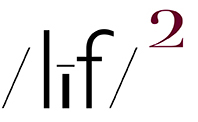IN AN ARTICLE IN TODAY’S NY TIMES THE AUTHOR writes that an exhibit, “Love Songs: Photography and Intimacy” at ICP, “…reveals the camera’s limitations as well as strengths when it comes to depicting romance..…[it] is as much about what photography can’t do as about what it can.” He also wrote:
“Love Songs” left me wondering if the theatricality of posing and the ambiguity of still images undercut the capacity of photography to document intimacy. Various art forms afford different advantages and limitations. Novels are best at describing the complex charms and vicissitudes of love, which is why so many of these artists resort to texts along with images.”
Re: the medium’s ability to “document”-or is it “depict”?-or convey feelings, emotions, concepts, or thoughts and the like is, iMo, at best, very limited. The medium’s strength-in fact it’s very raison d’être-is to depict / illustrate, by means of its intrinsic relationship to the real, the physical properties of that toward which a picture maker points* his/her picture making device. A strength that results in the creation of ipictures that are interesting to look at.
Does that mean that a photograph cannot incite thoughts or feelings? Absolutely not. However, any thoughts and or feelings that a photograph might incite has as much to do, if not more so than the picture maker’s intent, with what the viewer brings to the viewing - knowledge about the referent (aka: a people, place, or thing), a shared experience with that which is depicted, a viewer’s emotional state and art sensibilities to name just a few possibilities.
So, if a photograph, in and of itself, is a poor medium for conveying any meaning / message / concept beyond the most elementary, it begs the question, “How does a photographer capture and hold the attention of a viewer of his / her photographs?”
For some, the answer is simple…picture grand vistas (natural and urban), dramatic light, saturated colors, dramatic POV angles, and like. And, by all means, keep it simple. The referent is everything. For others, the answer is found in the pursuit of creating interesting form no matter the referent. A quality that flows from a personal vision. A vision that revolves around the pursuit of capturing the visually correct moment / opportunity to make an exposure, aka: the decisive moment**. As John Szarkowski wrote…
*One might compare the art of photography to the act of pointing. It must be true that some of us point to more interesting facts, events, circumstances, and configurations than others. [...] The talented practitioner of the new discipline would perform with a special grace, sense of timing, narrative sweep, and wit, thus endowing the act not merely with intelligence, but with that quality of formal rigor that identifies a work of art, so that we would be uncertain, when remembering the adventure of the tour, how much our pleasure and sense of enlargement had come from the things pointed to and how much from a pattern created by the pointer.
Re: “a pattern created by the pointer” - the “pattern” flows from the pointer’s personal vision. The point being that it does not matter what one points his/her picture making device toward. Rather, it is about how the pointed at referent is seen by the pointer and made visible in the resulting photograph.
Pick a well known / respected picture maker-Shore, Meyerowitz, Eggleston, Evans, Frank, Mann, Cartier-Bresson and so on. Take your pick. The beauty of their work is not so much about what they pictured but, rather, how they pictured it as an expression driven by their individual vision. And, iMo, it is worth noting that the pictures created with their unique vision are straightforward and honest depictions of the real, devoid of any art sauce, cheap tricks / gimmicks, or convoluted technical gymnastics.
All of the above written, I think it kinda sheds a new light on the idea of point and shoot.
**decisive moment as Cartier-Bresson intended it to mean: decisive not because of the exterior event but because in that moment the flux of changing forms and patterns is sensed to have achieved balance and clarity and order-because the image became, for a instant, a picture.

